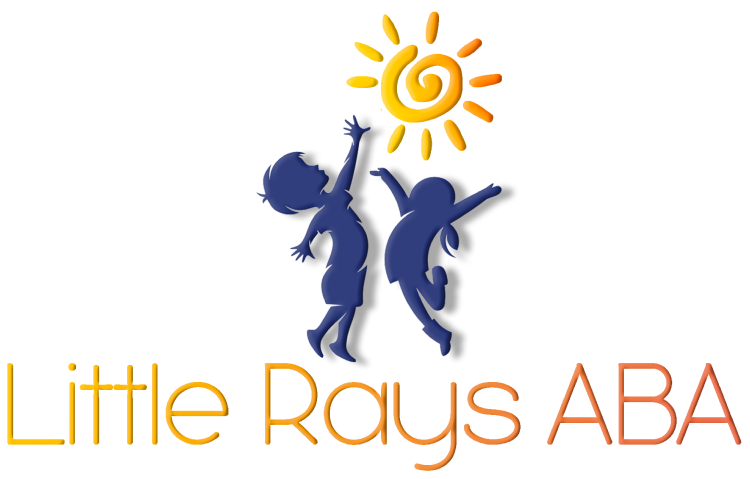Home-Based ABA Therapy Scheduling Strategies for Parents
Applied Behavior Analysis (ABA) therapy is an evidence-based approach designed to improve communication, social skills, and behavior management in children with Autism Spectrum Disorder. When conducted in the home environment, therapy sessions can be personalized to fit the child’s daily life and routines. Scheduling these sessions efficiently is crucial for creating a productive therapy dynamic. This blog explores home-based ABA scheduling strategies that parents can use to optimize therapy outcomes and foster a structured, supportive environment for their child’s development.
Exploring the Basics of Home-Based ABA Therapy
Home-based ABA therapy involves implementing Applied Behavior Analysis techniques in the comfort of a familiar environment. This personalized approach offers flexibility in addressing the child's unique needs while integrating therapy into their daily routines.
By conducting sessions in the natural environment, therapists gain valuable insights into the child's daily behaviors and interactions. This allows for targeted interventions tailored specifically for the child. Parents and caregivers can actively participate, making therapy an integral part of family life and leading to lasting behavior changes.
What is ABA Therapy and Its Significance?
ABA therapy, or Applied Behavior Analysis, focuses on using data-driven methods to improve social behaviors, communication skills, and general functioning. Behavior analysis plays a significant role in identifying and modifying patterns to help children with Autism Spectrum Disorder thrive.
A core concept of ABA therapy is positive reinforcement, which motivates children to engage in desirable behaviors through rewards. These techniques build essential social skills, enabling children to navigate interactions with family, peers, and community members.
The individual nature of ABA therapy is critical. Professionals work closely with families to tailor intervention plans to meet specific goals, such as improving communication or reducing challenging behaviors. By maintaining focus on individual needs, therapists ensure therapy remains adaptable, supporting the child's developmental progress across various stages.
Key Benefits of Choosing Home-Based ABA Therapy
Home-based ABA therapy offers numerous benefits for children and families. Conducting therapy in a comfortable environment provides familiarity, alleviating stress and optimizing engagement during sessions.
Family involvement is a cornerstone of home-based therapy. Parents, siblings, and caregivers actively participate, creating a collaborative dynamic that reinforces skill acquisition. This level of involvement promotes generalization of skills to real-life activities, such as mealtime or chores. The hands-on participation of family members strengthens the effectiveness of the therapy.
Another advantage is customization. A child’s therapy schedule and goals can be molded around their natural rhythms and developmental milestones. Therapists observe everyday interactions, ensuring tailored interventions align seamlessly with the child’s needs while fostering holistic growth.
Preparing for Home-Based ABA Therapy
Preparing for home-based ABA therapy involves setting up your home environment for seamless learning while gathering necessary tools and resources. Parents should collaborate with therapists to ensure a proper balance of structure and flexibility for effective sessions.
By integrating therapy into daily life, families create a conducive atmosphere while supporting skill generalization. A clear understanding of therapy goals and open communication with the therapy team further enhances the preparation process, making therapy personalized yet efficient.
Essential Tools and Resources Needed
Equipping your home for ABA therapy requires key tools for structured sessions. Therapy tools like visual schedules clearly outline daily activities, keeping children focused on the sequence of tasks throughout the session.
Resources such as timers facilitate smooth transitions between activities, while reward systems provide positive reinforcement. Using these tools not only keeps children engaged but also fosters self-regulation and independence over time.
Additionally, parents can use educational materials sourced online or through therapists to build familiarity with ABA principles. Having these resources ensures consistent learning and supports progress tracking. Open communication with therapists allows parents to assess whether tools adequately meet the child’s individual needs while fostering a positive atmosphere.
Setting Up a Conducive Therapy Environment at Home
Creating a conducive home environment for therapy starts with designating a quiet, clutter-free area. This allows your child to focus on therapy goals without unnecessary distractions.
A familiar setting helps reduce stress, boosting cooperation during sessions. Incorporating sensory-friendly elements, such as soft lighting or calming visuals, creates a comforting space tailored to your child’s preferences.
Aligning therapy goals with the setup provides consistency. For instance, having dedicated tools and materials readily available simplifies activities. Additionally, organizing schedules on a visible board fosters a structured routine, encouraging smoother transitions and higher engagement.
Step-by-Step Guide to Scheduling Home-Based ABA Therapy
Effective scheduling of home-based ABA therapy requires understanding your child’s needs while coordinating with therapists. Start by establishing goals and setting realistic expectations.
Break down routines into manageable activities and create visual schedules for clear communication. Most importantly, be flexible. Adjust schedules to accommodate unexpected changes while ensuring continuity. With proper planning, you can balance therapy sessions within daily family life, optimizing progress.
Step 1: Assessing Your Child’s Needs
Understanding your child’s specific needs is the foundation for creating an effective therapy schedule. Begin with a comprehensive approach by identifying areas such as communication, social interaction, or challenging behaviors requiring improvement.
Evaluating individual needs allows therapists to set measurable goals aligned with therapy outcomes. Parents can work with therapists to track daily routines and pinpoint patterns that hinder progress. These observations guide tailored strategies ensuring therapy remains results-driven yet flexible.
Ultimately, the focus is on addressing areas that produce the most significant benefit for the child's development, enabling them to thrive in everyday situations.
Step 2: Coordinating with ABA Therapists
Open communication with your ABA therapist is essential to planning therapy sessions effectively. Discuss scheduling options that align with your family’s routine and goals.
Coordination goes beyond setting times—it involves sharing observations about your child’s behaviors and progress in real-time. Therapists depend on this feedback for refining strategies to meet your child's changing needs.
Celebrate collaboration as part of a shared effort to ensure better therapy outcomes, fostering meaningful skill acquisition and seamless integration of these into your child’s development.
Step 3: Establishing a Routine
Daily routines provide clear expectations, setting a predictable framework for therapy sessions. Dedicate fixed times for sessions to ensure consistency while allowing flexibility for adjustments as needed.
Structured routines are highly effective for children with Autism Spectrum Disorder, fostering comfort, engagement, and productivity. Integrating therapy into daily living means reinforcing behaviors through repetition. This makes learned skills more adaptable to real-world scenarios.
Collaborating with therapists to build consistent routines not only strengthens goal alignment but shapes foundational habits as children progress.
Step 4: Integrating Therapy into Daily Activities
Incorporating therapy into everyday activities encourages the generalization of skills. For example, teaching social interaction during family meals or communication techniques while shopping solidifies learned behaviors.
Normalizing therapy as part of daily routines improves adaptability, making skills easier to retain and utilize. Parents should adopt this approach to embed therapy goals naturally into the child’s environment.
Allow for flexibility and creativity when integrating therapy, letting the child explore these skills across broader contexts to amplify learning possibilities.
Step 5: Monitoring Progress and Adjusting Schedules
Tracking progress ensures therapy strategies remain effective. Use tools like data logs and charts to monitor how your child responds to various activities, identifying areas for enhancement.
Adjust schedules based on observed trends. If certain times work better or your child feels overwhelmed, opt for incremental revisions to support comfort and engagement.
By making informed decisions, therapists and parents work collaboratively to enhance therapy outcomes, reinforcing skills over time while maintaining productivity.
Collaborative Strategies for Parents and Therapists
Strong collaboration between parents and therapists fosters success in home-based ABA therapy. Active participation in decision-making ensures personalized strategies align with the child’s developmental needs.
Regular communication builds trust, helping parents and therapists form an effective partnership that simplifies challenges while emphasizing consistent progress. Together, this team dynamic enhances overall therapy efficiency.
Building an Effective Parent-Therapist Relationship
The foundation of successful ABA therapy lies in creating an effective relationship between parents and therapists. Open communication establishes trust and allows parents to voice concerns or share observations.
Parents become integral members of the therapy team, ensuring strategies align with their child’s individual needs. It’s important to celebrate milestones together, reinforcing positive results through shared efforts. Developing this bond drives sustained progress toward therapy goals.
Communication Techniques for Ongoing Collaboration
Employing effective communication skills strengthens collaboration between parents and therapists. Regular updates on progress ensure adjustments to therapy plans are based on relevant data.
Open, transparent discussions foster mutual understanding, enabling both parties to address challenges proactively. This helps create a fluid therapy dynamic adaptable to the child’s evolving needs.
By prioritizing communication, parents and therapists form a cohesive framework committed to maximizing therapy outcomes.
Addressing Common Challenges in Home-Based Therapy
Home-based ABA therapy comes with its unique challenges, such as scheduling conflicts or behavioral shifts. These can affect consistency and progress.
Through careful planning and adaptable strategies, parents can mitigate these issues by balancing therapy with family routines and staying responsive to the child’s developmental needs. Proactive adjustments ensure sessions remain effective.
Managing Scheduling Conflicts
Scheduling conflicts may arise due to unforeseen events, making careful planning essential for minimizing disruptions. Clearly outline session times based on your family's routine to create stability.
Stay flexible, allocating buffer times that allow room for unexpected changes. Use open communication with therapists to ensure everyone involved understands the priorities.
With thoughtful collaboration, scheduling conflicts become manageable, ensuring therapy goals remain uninterrupted.
Adapting to Behavioral Changes and Developments
Children may experience behavioral shifts during therapy that require adaptability. Parents and therapists should regularly analyze these changes, adjusting strategies to suit the child's growth.
Behavior management techniques like reinforcement systems address new challenges effectively. By acknowledging progress, families foster a supportive atmosphere encouraging adaptability.
Incorporating these dynamic methods enhances therapy goals, leading to sustainable results.
Enhancing Therapy Outcomes at Home
Parents can amplify home-based therapy outcomes by incorporating playful activities and natural environments into sessions. These elements foster engagement and creativity while broadening the scope for skill application.
Generalizing skills across varied settings contributes to lasting changes and better integration of learned behaviors into everyday life. With consistent efforts, positive growth becomes achievable.
Incorporating Play and Natural Environments
Play initiates natural learning environments ideal for skill-building. Activities such as role-playing or outdoor games develop both social skills and creativity.
By introducing therapy goals into playful routines, children enjoy enhanced engagement and cooperation. These settings provide opportunities for stronger connections between therapy strategies and real-world scenarios.
Parents should embrace play as a dynamic tool for reinforcing positive behaviors, supporting their child in flourishing emotionally and socially.
Generalizing Skills to Broader Contexts
Generalization strengthens the impact of therapy outcomes, encouraging children to apply learned skills across broader contexts. Practicing self-care tasks or interacting socially in public spaces boosts independence and adaptability.
Parents can collaborate with therapists to identify everyday situations aligned with therapy goals, such as grocery shopping or school settings. These opportunities help children transfer their learning seamlessly.
With targeted approaches, skill application becomes a part of everyday life, contributing to better independence and overall development.
Conclusion
In conclusion, implementing home-based ABA therapy requires thoughtful scheduling and collaboration between parents and therapists. By understanding your child's unique needs and establishing a structured routine that targets specific skills, you can create an environment that fosters growth and development. Overcoming common challenges and enhancing therapy outcomes involves open communication, adaptability, and a commitment to integrating therapeutic practices into your daily life. As a parent, your active participation is crucial for maximizing the benefits of ABA therapy. Remember, progress may not always be linear, but with dedication and the right strategies in place, you can make significant strides toward helping your child thrive. For further insights and techniques, explore our FAQs or reach out for additional resources tailored to support you on this journey.
At
Little Rays ABA, we understand the importance of consistency in home-based ABA therapy. Our expert team helps parents create customized scheduling strategies that integrate seamlessly into daily routines, ensuring the therapy sessions are effective and manageable. Whether it’s balancing schoolwork, family time, or other activities, we provide the support needed to build a structured yet flexible schedule. Ready to make a positive change?
Contact Little Rays ABA
today to learn how our tailored scheduling solutions can support your child’s development.
Frequently Asked Questions
How long should a typical home-based ABA session last?
A typical ABA session duration varies based on the specific needs of the child. Sessions generally last 2-4 hours and are structured into manageable segments that align with therapy schedules. Collaborating with therapists ensures tailored schedules for maximum effectiveness.
Can parents without formal training conduct ABA sessions?
Parents without formal training can conduct ABA sessions under therapist guidance. Parent training programs empower caregivers with tools to reinforce learning, promoting skill development at home and fostering independence in children.
What are signs of progress in ABA therapy?
Progress signs in ABA therapy include enhanced communication, increased social interactions, improved daily living skills, and reduced challenging behaviors. Observable patterns of skill acquisition reflect therapy effectiveness, demonstrating ongoing benefits.
How to handle setbacks in home-based ABA schedules?
Handling setbacks requires adaptability and behavior modification. Reassess therapy schedules collaboratively with therapists and introduce flexible arrangements. By addressing challenges proactively, families ensure consistent progress while maintaining therapy goals.
Are there online resources for additional ABA training for parents?
Yes, online platforms offer ABA training geared toward family dynamics. Tools such as webinars, video lessons, and access to licensed professionals provide parent-friendly resources for better understanding of therapy techniques and implementation strategies.
Sources
- https://www.ncbi.nlm.nih.gov/books/NBK221127/
- https://www.behavior-analysis.org/
- https://pmc.ncbi.nlm.nih.gov/articles/PMC9458805/
- https://www.simplypsychology.org/positive-reinforcement.html
- https://mhanational.org/resources/creating-a-healthy-home-environment/
- https://www.autismspeaks.org/applied-behavior-analysis
Related Posts





